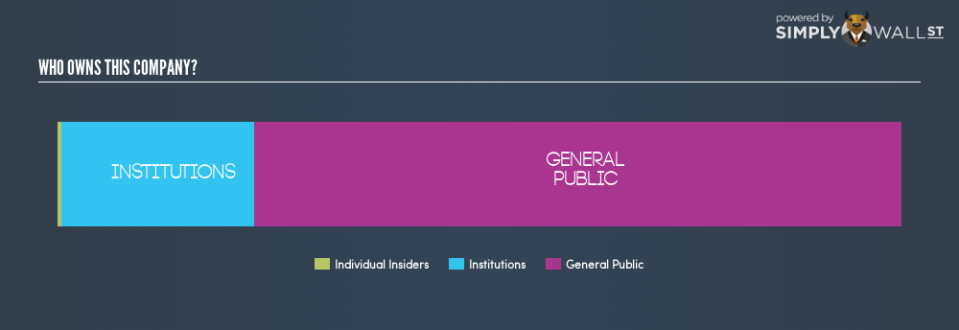Should You Worry About The The Keg Royalties Income Fund’s (TSE:KEG.UN) Shareholder Register?

In this analysis, my focus will be on developing a perspective on The Keg Royalties Income Fund’s (TSE:KEG.UN) latest ownership structure, a less discussed, but important factor. When it comes to ownership structure of a company, the impact has been observed in both the long-and short-term performance of shares. If an activist institution invests the same amount of capital in a stock as a passive long-term pension fund, the implications are potentially different for key corporate financing decisions such as the use of excess cash or the source of financing. While these are more of a long-term investor’s concern, short-term investors may find the impact of institutional trading overwhelming enough to lose out on what could be a potential opportunity. Therefore, it is beneficial for us to examine KEG.UN’s ownership structure in more detail.
See our latest analysis for Keg Royalties Income Fund
Institutional Ownership
Institutions account for 22.8% of KEG.UN’s outstanding shares, a significant enough holding to move stock prices if they start buying and selling in large quantities, especially when there are relatively small amounts of shares available on the market to trade. These moves, at least in the short-term, are generally observed in an institutional ownership mix comprising of active stock pickers, in particular levered hedge funds, which can cause large price swings. In the case of KEG.UN, investors need not worry about such volatility considering active hedge funds don’t have a significant stake. However, we should dig deeper into KEG.UN’s ownership structure and find out how other key ownership classes can affect its investment profile.
Insider Ownership
An important group of shareholders are company insiders. Insider ownership has to do more with how the company is managed and less to do with the direct impact of the magnitude of shares trading on the market. KEG.UN insiders hold a minor stake in the company, which somewhat aligns their interests with that of shareholders. However, a higher level of insider ownership has been linked to management executing on high-returning projects instead of expansion projects for the sake of apparent growth. It would also be interesting to check what insiders have been doing with their shareholding recently. Insider buying can be a positive indicator of future performance, but a selling decision can be simply driven by personal financial requirements.
General Public Ownership
The general public holds a substantial 76.6% stake in KEG.UN, making it a highly popular stock among retail investors. With this size of ownership, retail investors can collectively play a role in major company policies that affect shareholders returns, including executive remuneration and the appointment of directors. They can also exercise the power to decline an acquisition or merger that may not improve profitability.
Next Steps:
KEG.UN’s considerably high level of institutional ownership calls for further analysis into its margin of safety. This is to avoid getting trapped in a sustained sell-off that is often observed in stocks with this level of institutional participation. However, ownership structure should not be the only focus of your research when constructing an investment thesis around KEG.UN. Rather, you should be examining fundamental factors such as Keg Royalties Income Fund’s past track record and financial health. I highly recommend you to complete your research by taking a look at the following:
Future Outlook: What are well-informed industry analysts predicting for KEG.UN’s future growth? Take a look at our free research report of analyst consensus for KEG.UN’s outlook.
Past Track Record: Has KEG.UN been consistently performing well irrespective of the ups and downs in the market? Go into more detail in the past performance analysis and take a look at the free visual representations of KEG.UN’s historicals for more clarity.
Other High-Performing Stocks: Are there other stocks that provide better prospects with proven track records? Explore our free list of these great stocks here.
NB: Figures in this article are calculated using data from the last twelve months, which refer to the 12-month period ending on the last date of the month the financial statement is dated. This may not be consistent with full year annual report figures.
To help readers see past the short term volatility of the financial market, we aim to bring you a long-term focused research analysis purely driven by fundamental data. Note that our analysis does not factor in the latest price-sensitive company announcements.
The author is an independent contributor and at the time of publication had no position in the stocks mentioned. For errors that warrant correction please contact the editor at editorial-team@simplywallst.com.

 Yahoo Finance
Yahoo Finance 
